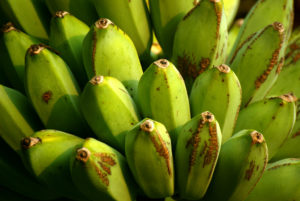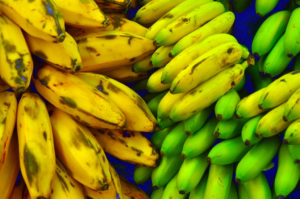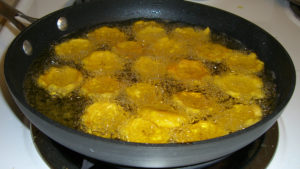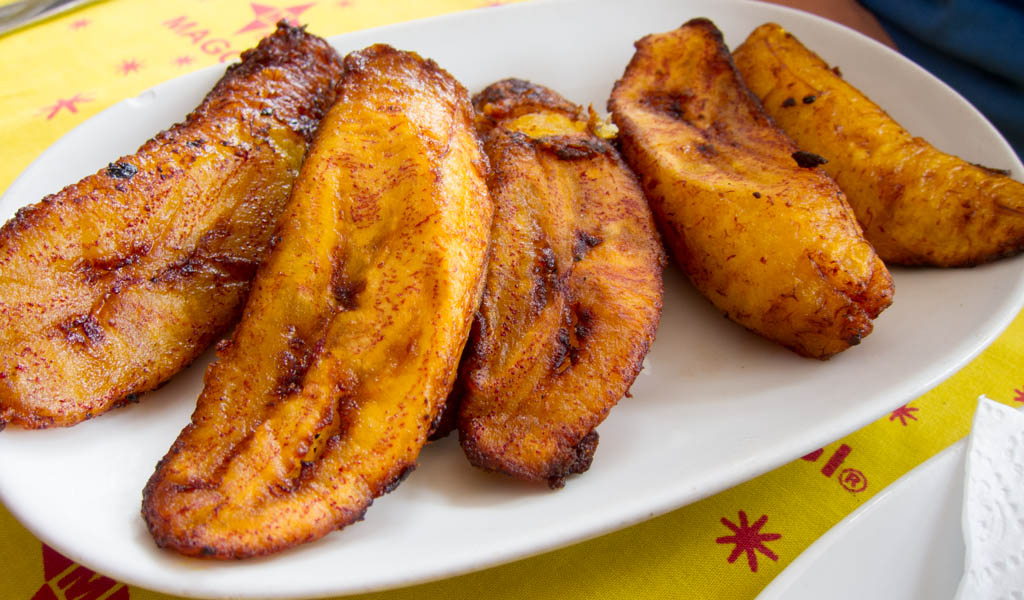Plantains, or cooking bananas, are banana cultivars in the genus Musa whose fruits are generally used only for cooking. However, they may be eaten while ripe or unripe and they’re generally starchy. Take a look below for 25 more fun and interesting facts about plantains.
1. The term “plantain” is loosely applied to any banana cultivar that is eaten when cooked. However, there is no formal botanical distinction between bananas and plantains.
2. Ripe plantains can be eaten raw, since the starches are converted to sugars as they ripen.
3. In some countries, there may be a clear distinction between plantains and bananas, but in other countries, where many more cultivars are consumed, the distinction isn’t made.
4. All modern plantain cultivars have three sets of chromosomes.

5. Many modern plantains are hybrids derived from the cross of two wild species, the Musa acuminata and Musa balbisiana.
6. Fe’i bananas from the Pacific Islands are often eaten roasted or boiled, which is why they’re informally called “mountain plantains.”
7. Plantains are a major food staple in West and Central Africa, the Caribbean islands, Central America, and northern, coastal parts of South America.
8. Mature, yellow plantains can be peeled like typical dessert bananas. The pulp is softer than in immature, green fruit and some of the starch has been converted to sugar.
9. As a staple, plantains are treated in a similar way as potatoes and with a similar neutral flavor and texture when the unripe fruit is cooked by steam, boiling or frying.
10. Since they fruit all year round, plantains are a reliable all-season staple food, particularly in developing countries with inadequate food storage, preservation and transportation technologies.

11. In Africa, plantains and bananas provide more than 25% of the carbohydrate requirements for over 70 million people.
12. In countries in Central America and the Caribbean, the plantain is either simply fried, boiled or made into plantain soup.
13. In Kerala, an Indian state, ripe plantain is steamed, which is a popular breakfast dish.
14. In Ghana of West Africa, boiled plantain is eaten with kontomire stew, cabbage stew or fante-fante stew.
15. In Nigeria, plantain is eaten boiled, fried or roasted. Boli, which is roasted plantain, is usually eaten with palm oil or groundnut.
16. In Puerto Rico, the Dominican Republic and Cuba, plantain is mashed after it has been friend and is made into mofongo, or fried and made into tostones, tajadas, or platanutres.

17. Plantains are sometimes dried and ground into flour. In southern India, dried plantain powder is mixed with a little bit of fennel seed powder and boiled in milk or water to make baby food.
18. In Peru, plantains are boiled and blended with water, spices and sugar to make chapo.
19. Plantains are packed with potassium, which is known as a powerful vasodilator. Potassium can help in relaxing the tension in your blood vessels and arteries.
20. Plantains contain high levels of vitamin C, meaning that they help keep your immune system stimulated and producing white blood cells.
21. Plantains contain high levels of dietary fiber, which can help optimized digestion by stimulating peristaltic motion, improving the nutrient uptake efficiency and balancing the bacterial levels in the gut.
22. They’re packed with magnesium, which is known to increase the release of tryptophan and serotonin in the body, which can help people relax and sleep.

23. Plantains are high in iron, which is essential for the production of red blood cells.
24. Plantains are packed with vitamin A, which has been directly linked to improved eye health in numerous studies. Vitamin A functions as an antioxidant in the body, working to reduce oxidative stress in the eyes.
25. Plantains are used in the Ivory Coast dish aloco as the main ingredient. Friend plantains are covered in an onion-tomato sauce, often with a grilled fish between the plantains and sauce.




